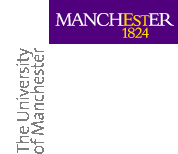Objectives
The treatment of critically ill patients suffering from burns, chronic skin ulcers or serious wounds, is often complicated by infection. Early detection of bacterial and/or fungal infections is a well identified problem in healthcare, where there are significant scientific and technical problems to be overcome.
WOUNDMONITOR will apply state of the art sensor technology for research and development on an innovative diagnostic system that will enable
- non-invasive sampling of volatiles emitted from burns, skin ulcers or gaping wounds
- rapid processing of such samples with a mobile laboratory-based multi-technology gas sensor array and pattern recognition
- rapid diagnosis of changes in state of a patient,
- assistance to medical personnel in decision-making in the treatment of such patients.
- enhancement of patient safety and personalisation of healthcare and lifestyle management for patients.
Project Description : The systems of health care in the European Union and the New EU Countries face the challenge of attaining simultaneously the three-fold objective of access to care for everyone, a high level of quality in the care provided and the financial viability of health care systems. This project meets the challenge by aiming at the long-term objective to develop new medical instruments and/or intelligent diagnosis equipment for healthcare of the future, using advanced sensing systems. The project intends to solve well-identified scientific/technical problems related to acquisition of accurate data for healthcare and to explore new concepts for the integrated systems for health. The research project involves teams from 4 European Countries, namely UK , Germany , Italy and Lithuania . WOUNDMONITOR aims to combine a laboratory-based sensor module, pattern recognition subsystem and non-invasive sampling of volatiles emitted from such wounds into highly intelligent system that allows the rapid processing of these samples and is capable of assisting in early and rapid diagnosis of changes in state of a patient, and aid decision making by medical personnel in the treatment of such patients.
The main purposes of WOUNDMONITOR are
- Adaptation of electronic nose technology to a personalised monitoring system capable of early detection and identification of the wound clinical infection.
- Definition of the relationship between the gas sensor outputs and the microbiological data and medical information on the tissue and person levels. Integration of the available information into a snapshot of the state of the patient’s health.
- Combination of several gas sensor types in an integral sensor module.
- Implementing methods for the dynamic data recording and analysis in the electronic nose technology and adapting of the recognition algorithms to automate diagnosis.
- Development of a prototype system based on electronic nose technology

